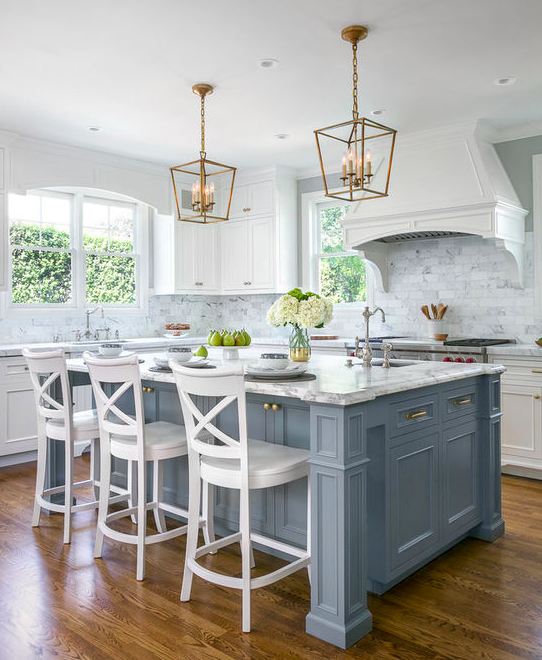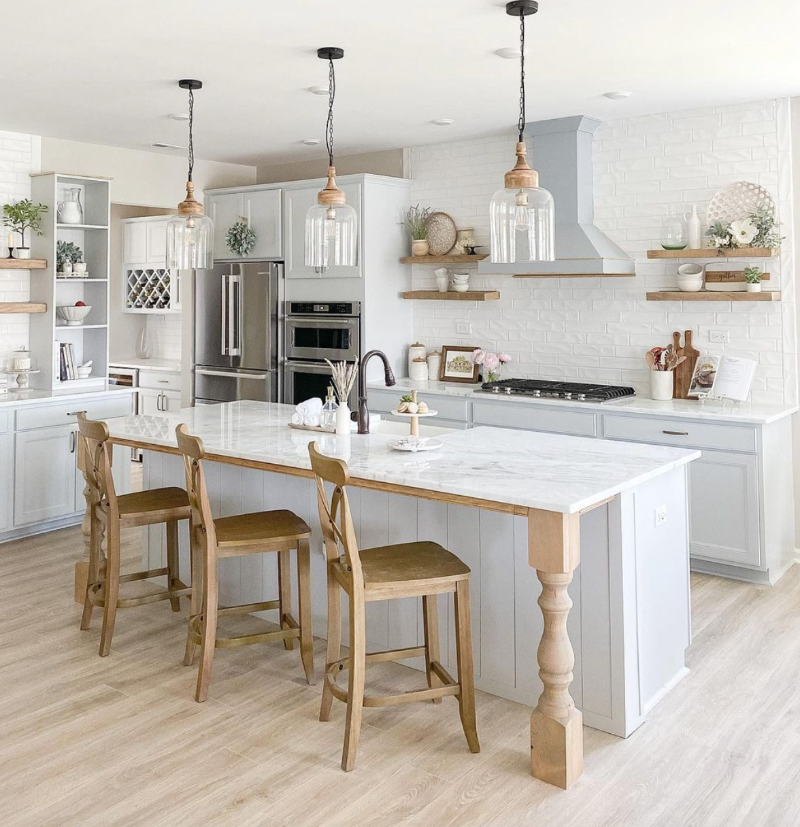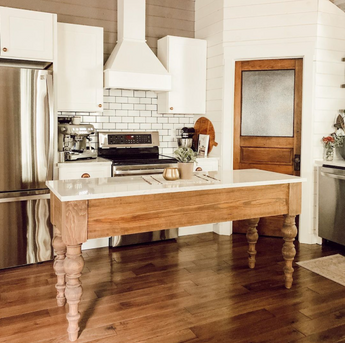Kitchen Island Legs: Include Performance and Design to Your Area
Kitchen Island Legs: Include Performance and Design to Your Area
Blog Article
Necessary Tips for Choosing the Perfect Table for Your Kitchen
Choosing the best dining table for your cooking area is greater than simply a matter of taste; it demands a detailed understanding of your area and needs. Begin by measuring your offered room to guarantee ample clearance for movement. The shape of the table plays a critical function; while rectangular tables suit bigger locations, rounded ones foster intimacy, and extendable alternatives use adaptability. Product option is just as crucial, with hardwoods supplying longevity and glass borrowing a contemporary touch. Lastly, the table needs to harmonize with your cooking area's appearances and suit your family conveniently. What other elements might affect this essential decision?
Step Your Room
Picking the excellent eating table starts with a meticulous evaluation of your available space. This fundamental action guarantees that the table not only fits comfortably within the room yet also enhances the general design and performance of your dining location. Begin by gauging the measurements of the space, taking into account entrances, windows, and any type of existing furniture. This will certainly aid you figure out the optimum allowed size for your eating table.
It is vital to leave sufficient space for chairs to be drawn out and for people to relocate around the table without obstruction. A basic rule of thumb is to enable at least 36 inches of clearance from the edge of the table to the nearby wall or piece of furniture.
In addition, consider the number of people you typically captivate and whether you need extra room for guests. Choosing an extendable table can offer adaptability, enabling you to accommodate differing varieties of diners. By properly measuring your space, you prepared for picking a table that boosts both the looks and capability of your eating area.
Choose the Right Shape

On the various other hand, round tables are superb for smaller kitchen areas or intimate events, as they promote conversation by permitting everyone to face each other. They likewise give a sense of comfort and can fit well in tighter areas as a result of their absence of sharp corners. Oblong tables use the very best of both globes, combining the size of rectangular tables with the intimacy of round ones, making them functional for different settings.
Square tables are one more choice, particularly fit for square-shaped rooms. They create a symmetrical and modern look, cultivating an equivalent dining experience for all seated.
Material Considerations
When choosing a dining table, product considerations are vital in figuring out the table's longevity, upkeep needs, and total aesthetic. Timber is a traditional choice, offering classic appeal and effectiveness.
Glass-topped tables offer a modern-day, sleek look and can make an area appear bigger because of their openness. They require constant cleaning to avoid fingerprints and spots. In addition, tempered glass is advised for its additional stamina and safety.

Finally, composite products like MDF (Medium-Density Fiber board) or plywood are budget-friendly options. These materials can imitate the look of strong timber however may not offer the very same long life. They are generally easier to tidy but can be vulnerable to water damages otherwise properly sealed.
Inevitably, the selection of material must line up with your kitchen area's style, your way of living requires, and your spending plan restrictions. (kitchen island legs)
Seating Capability and Comfort
Exactly how do you establish the best seating capability and comfort for your table? This essential action entails evaluating both the physical room readily available in your kitchen area and your family's functional requirements. Begin by measuring your kitchen location to ensure the table fits conveniently, enabling a minimum of 36 inches of clearance around it for easy movement. Consider the number of people that usually eat with each other, as this will certainly influence the table size. For a family of 4, a rectangular table of 48 inches long or a round table with a 48-inch size is normally sufficient.
The height of the table need to preferably be around 30 inches, supplying a well balanced visit this web-site ergonomic position for seated restaurants. Chairs you can check here ought to have a seat elevation of 18 to 20 inches to guarantee a comfortable eating stance.
Style and Looks
Selecting a table that fits your style and appearance involves balancing personal taste with the existing design of your eating room. The dining table is typically the focal point of the kitchen area, and its style should match the general theme of the area. Whether your kitchen flaunts a modern-day, minimalist appearance or a rustic, farmhouse charm, the table you choose ought to harmonize with these components to create a cohesive and inviting environment.
Take into consideration materials very carefully; wood supplies a timeless appeal and can vary from rich mahogany for a traditional seek to lighter oak for a modern feeling. Metal and glass tables, on the various other hand, can present a streamlined, commercial edge to your kitchen area. Do not forget the table's form-- rectangle-shaped tables are versatile and traditional, while round and oval options can promote a more intimate eating experience.
In addition, pay attention to finishes and information. A distressed coating may add character and warmth, whereas a shiny surface area can contribute to a tidy, modern-day visual. Eventually, your table need to not just in shape effortlessly into your kitchen's style but additionally show your individual design, raising the area both functionally and visually.
Final Thought
Finally, selecting the ideal table for a kitchen demands mindful examination of room, shape, product, seating ability, and aesthetic consistency. Making sure a minimal clearance of 36 inches promotes comfortable activity, while the choice of form improves spatial dynamics. Material selection effects resilience and layout, making it crucial to line up with the kitchen area's general aesthetic. Ultimately, an appropriate table fosters a welcoming atmosphere and suits the family pleasantly, thus improving the dining experience.

When picking an eating table, product considerations are paramount in establishing the table's durability, maintenance demands, and total aesthetic. For a family members of four, a rectangle-shaped table of 48 inches long or a round table with a 48-inch size is usually sufficient.
Do not overlook the table's form-- rectangular tables are classic and flexible, while round and oval options can cultivate a much more intimate eating experience. kitchen island legs.
Report this page